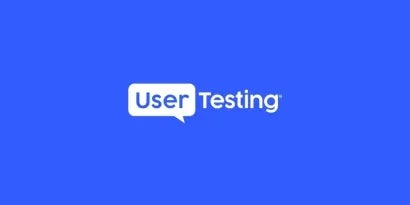
Episode 141 | October 21, 2024
Small words, big impact: how content tweaks can boost engagement by 30%
Discover how small content tweaks can drive big user engagement. Kelly Erickson shares insights on content design and testing for a better customer experience.
Small words, big impact: how content tweaks can boost engagement by 30%
"Simple is always hard," says Kelly Erickson, Content Designer at Warner Music Group.
This sentiment rings true in her experience, where small changes in content can drive significant user engagement. Talking with UserTesting’s Sean Treiser in a recent episode of Insights Unlocked, Kelly shared an experience at Eventbrite that showed that even a slight tweak in language can make a huge difference—boosting click-through rates by up to 30%.
“You wouldn’t think a headline change would do much,” she said. “But in this case, it was the only adjustment we made, and it led to a 30% increase in clicks.”
The unique role of words in content design
One of the key takeaways from Kelly’s conversation was the critical role of content testing in shaping effective digital experiences.
When asked, "What is unique about content design compared to other design disciplines?" Kelly Erickson emphasized that content design focuses heavily on the role of words in the user experience. She explained, "You strip away the words, and you don’t have much left in the design." The key difference lies in finding the balance between giving users enough information to take the next step and presenting it in a clear, intuitive way.

Erickson shared an example from her time at Eventbrite, where simplifying payment methods and labels had a significant impact on user experience, noting that "simple is always hard."
After testing different variants, the team discovered that reframing the language to focus on the user's event experience—not just ticket delivery—improved overall engagement. “Users cared more about helping the organizer and enhancing their experience than simply getting their ticket,” Kelly explained.
Small changes, big impact
One of the most striking stories from the interview was when a simple headline change resulted in a 30% increase in click-through rates. Kelly pointed out that small adjustments like this can have an outsized impact on user behavior, especially when grounded in careful testing. “We learned that even minor wording tweaks could unlock deeper user motivations, leading to much better results,” she said.
While many teams rush to finalize designs, Kelly advocates for the power of testing words, headlines, and phrasing to uncover what resonates best with users.
“Small content tweaks can lead to big engagement results.” – Kelly Erickson
Prioritizing content elements for testing
When asked how she prioritizes which content elements to test first, Kelly explained that it depends on what’s already known about the users and the state of the project. "What do we know about our users? What information do we already have?" These are key questions she asks when starting any project. If there’s enough data available, Kelly often moves directly to A/B testing, but if there’s uncertainty, she begins with qualitative testing to uncover user needs. "Sometimes, we’re brought in late to just add the words, but when we can test the messaging early, it shapes the entire flow," she said.

Balancing qualitative and quantitative data
Kelly also touched on the delicate balance between qualitative and quantitative data. While content testing provides valuable qualitative feedback, Kelly emphasized the importance of backing up those insights with hard data like click-through rates and engagement metrics. “The qualitative feedback tells you why something might work, but the quantitative data shows you if it’s actually working at scale,” she shared.
By using both types of data in tandem, content designers can make more informed decisions that not only appeal to users but also drive measurable business outcomes.
Designing for user motivation
A recurring theme throughout the conversation was the idea of designing content that taps into user motivations. Kelly highlighted the value of focusing on what users truly care about, rather than simply pushing information at them. “When you speak to users’ deeper motivations, you create a more meaningful connection that leads to higher engagement,” she explained.
For instance, rather than focusing on transactional elements, such as ticket delivery, Kelly’s content design approach zeroed in on enhancing the overall event experience, a move that resonated more deeply with users and led to greater success.
“The clearer and more human your content is, the easier it is for users to achieve their goals.” – Kelly Erickson
Choosing the right metrics for content effectiveness
When determining the right metrics to evaluate content during testing, Kelly emphasized that it largely depends on the project’s goals. "It depends on what you’re working toward," she explained, highlighting that different projects may require different metrics. For example, when working on a checkout flow at Eventbrite, the goal was to reduce steps without losing engagement, so they measured order form completion rates, which remained strong at 80-86%. Erickson also mentioned common metrics like click-through rates and conversions but stressed the importance of context: "Click-through rate might look great, but if users abandon the next step, there’s still work to be done."

Empowering content designers to make an impact
To wrap up the discussion, Kelly offered practical advice for content designers and UX professionals. She encouraged teams to start content testing early in the process and to use data-driven insights to inform their design choices. “It doesn’t have to be complicated,” she said. “Even quick tests can provide valuable insights that improve user experience.”

Ultimately, Kelly believes in the power of content design to transform digital experiences. By focusing on clarity, user motivation, and continual testing, she argues that content designers can create more intuitive and successful products. “When you take the time to refine your content and align it with what users truly want, you see the difference it makes,” she concluded.

Episode links:
- Content Testing & Measurement: How to Evaluate & What to Use
This page outlines key content testing methods like A/B testing, usability testing, and surveys, which align with Kelly's focus on refining language through content testing. - 9 User Experience (UX) Metrics You Should Know
This article discusses both qualitative and quantitative metrics, echoing Kelly's advice on balancing these insights to drive better user engagement and design decisions. - The Ultimate Guide to User-Centric Product Design
For those interested in product design rooted in user insights, this guide provides a comprehensive look at the importance of iterative design and user feedback, topics covered in Kelly's episode. - How Design Teams Leverage User Feedback
This page explores how UX teams can use feedback to improve design and content, reflecting Kelly's insights on testing and iterating based on user data. - Eventbrite – Kelly references her past role at Eventbrite where she learned about the power of content design and testing.
- Strategic Content Design by Erica Jorgensen – A book Kelly recommends for anyone interested in content testing and design strategies.
- Brené Brown – Kelly quotes her saying, "Clear is kind," in relation to designing clear and effective content.
- Candi Williams – Referenced by Kelly for her content design insights shared at a previous Config event.
- How to write plain language for a better user experience. Good writing goes unnoticed. At least, that’s what we UX writers say to ourselves when all anyone tells us is “nobody reads.” Ideally, UX writing, or content design, should complement strong visual design, with the aim of guiding rather than directing a user through an experience.










